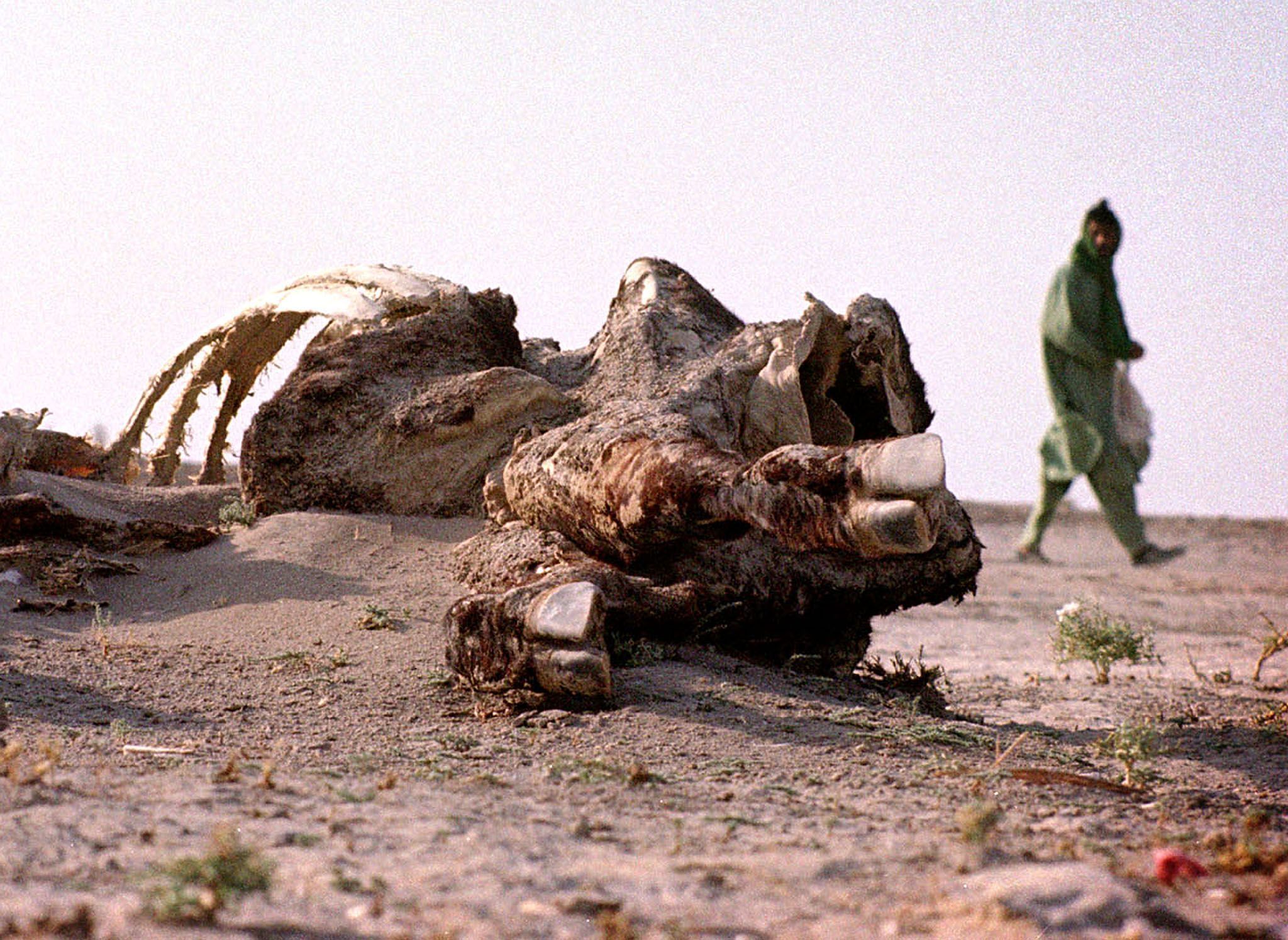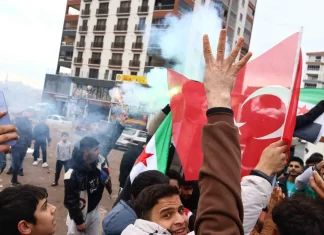By Ahmad Rafat
The UK and Italy jointly chair the 2021 United Nations Climate Change Conference (COP26), which started in Glasgow, Scotland, on Oct. 31 and ends Nov. 12. Some 25 representatives from 200 countries, including several heads of state, have attended this year’s climate change conference.
In his opening speech, UN Secretary-General Antonio Guterres said, “We face a stark choice: either we stop it, or it stops us. It’s time to say enough — enough of brutalizing biodiversity, enough of killing ourselves with carbon, enough of treating nature as a toilet.”
The director of Iran’s Department of Environment (DOE), Ali Salajegheh, headed the Iranian delegation to the conference. Initially, Iranian president Ebrahim Raisi reportedly planned to attend the event. However, the trip was canceled after several human rights organizations wrote a letter to the Scottish government, demanding Mr. Raisi’s arrest for his role in the 1988 executions of political prisoners and crimes against humanity.
EXCLUSIVE – U.N. Expert Backs Probe into Iran’s 1988 Killings, Raisi’s Role
The Islamic Republic does not hold a positive view of the COP26 and the previous 25 summits. Some Iranian officials believe that the UN climate change conferences are part of a broader conspiracy to stop the progress and development of Iran and other Islamic countries.
Under the Paris Agreement adopted during the 2015 COP21, the Islamic Republic committed to reducing its carbon dioxide (CO2) emissions by 4 percent, despite being under sanctions, and Iranian officials promised to raise that number to 12 percent if sanctions were lifted. However, Iran’s CO2 emissions have steadily increased since 2015.
Iran is ranked eighth in terms of its carbon footprint, according to the World Population Review’s 2021 report. It has higher CO2 emissions per capita (8.8 tons per person) than many industrial countries such as Italy, France, and Australia.
According to many environmentalists and climatologists, including Dr. Nasser Karami, Iran was a pioneer in solar energy before the 1979 Islamic Revolution.
Although most of the nationwide unrest in Iran in the past few years has been sparked by the country’s dire economic conditions, some of the largest protests have happened in regions facing impending environmental disaster. According to official government reports, the economic crisis in rural regions struggling with environmental issues has forced many people to move to cities.
To better understand this demographic shift, we need to examine those regions in Iran that have been hardest hit by the climate crisis.
A protest starting on Dec. 28, 2017, in Mashhad, capital of the northeastern province of Khorasan Razavi, spread rapidly to other parts of the country. The province and the entire region are plagued with severe environmental challenges.
Some 630 villages in Khorasan Razavi Province face water shortage, which has forced many to move to the outskirts of Mashhad. The city’s population has grown to 1 million, the most significant population increase in the entire country. The inhabitants of 1,850 villages in the northeastern province of East Khorasan have abandoned their homes because of water shortage, which has turned those regions into ghost towns.
Tankers have to transport water to many villages which previously relied on the network of qanat for their water. Qanat is a traditional system for transporting water from an aquifer or water well to the surface through an underground aqueduct. Water shortage poses a serious threat to 97 percent of the villages in the northeastern province of North Khorasan.
Another province that wrestles with environmental issues is Khuzestan, which borders on Iraq and the Persian Gulf. It is the primary oil and gas producing region of Iran, making it the wealthiest province in the country. Khuzestan held some of the largest water reservoirs in the country until recently but now faces severe water shortages.
ANALYSIS: Much of Iran Is Threatened By Drought and Water Scarcity
In recent years, a series of projects to transfer water from Khuzestan to central regions have dried rivers and marshes in the province. Many cities in Khuzestan, including the capital Ahvaz, have been plagued with persistent haze caused by chronic drought and water shortage.
Clouds of dust and smoke particles have destroyed some 50 hectares of farmland in the province. Lack of vegetation allows floodwaters to destroy many villages and inflict massive damages to urban centers. Khuzestan is one the most polluted regions in the country and is losing population faster than any other province.
Western provinces also struggle with drought and water scarcity. The vegetation covering the Zagros Mountains Forest steppe has rapidly shrunk in the past 40 years because of water shortage and severe drought.
The Zagros Mountains Forest steppe spans 11 provinces, mainly through the country’s western border, and is home to 400 species of plants and wildlife. With an annual rainfall of 800 millimeters, the steppe provides half of the country’s water supply. A wide variety of wildlife, including wolves, leopards, and Persian fallow deer, live in the Zagros mountains.
The steppe plays a significant role in maintaining the country’s ecosystem, given that only 7 percent of Iran’s land area is forested. It is also home to varieties of oak species that support a wide range of wildlife, including wolves, leopards, and Persian fallow deer.
Some 15 million people live along the Zagros Mountains Forest steppe. Close to 19 million farm animals graze in the Zagros Forest, providing livelihoods for 400,000 families, many of whom have been forced to flee their homes and farms because of raging fires. Close to 2,000 hectares of the forest were destroyed by fire in the summer. Some 14,000 fires in the past decade have destroyed 125,000 hectares of the Zagros Mountains Forest steppe.
Central provinces, which are homes to several industries, including steel mills that need a massive amount of water to operate, have struggled with drought and water scarcity in the past few years. As deep as 100 meters, wells were the primary water source for the inhabitants, but nowadays, locals have to dig down to 400 meters before finding water. As a result, the surface layer in some regions has dropped by 15 centimeters.
According to official reports, the surface area of Tehran Province sinks 26 centimeters a year, and the Rafsanjan (southeast), Zarand (southeast), Mashhad (northeast), and Ghazvin (northwest) plains sink by 30, 25, 25, and 24 centimeters every year, respectively.
Mass migration from drought-stricken and impoverished regions has increased the population of major cities, including the capital Tehran and Karaj (52 kilometers northwest of Tehran), forcing the authorities to consider rationing water at the start of winter. The southern province of Sistan and Baluchestan is plagued with drought and chronic haze, forcing many villagers to abandon their homes and move to cities.
Drought has been the principal environmental hazard affecting a large part of the country. According to a recent report by the Islamic Republic of Iran Meteorological Organization’s (IRIMO) National Center for Drought and Crisis Management, the country received 34 percent less rain in 2020 than in 2019. Provinces of Sistan and Baluchestan, Hormozgan (north), Kerman (southeast), and Khorasan Razavi received between 57 percent and 92 percent less rain in 2020 than in 2019.
Jailed Iranian Environmentalist Was Tortured, Says Sister of Fellow Detainee
According to the DOE’s Conservation of Iranian Wetlands Project (CIWP), 75 percent of the 1,000 wetlands in the country face the threat of becoming wastelands, with 67 percent of their surface water drained and evaporated already.
Many Iranian cities have poor air quality and show a high level of pollution. According to the Air Quality Index (AQI), a value of 50 or lower represents good quality air, and numbers above 300 show hazardous air quality. The AQI for some Iranian cities such as Arak, the capital of the central province of Markazi, reaches 450 marks on some days.
Most power stations in Iran use diesel fuel and low-quality gasoline, which contribute to air pollution. The gasoline and diesel fuels used in Iran are14 and 4,000 times the Global Sulfur Level set by the UN Environment Program.
Many regions in Iran have been hit hard by floods in recent years. Flash floods affected 20 provinces last year, destroying properties, displacing many people, and inflicting nearly $91 million in damages.






